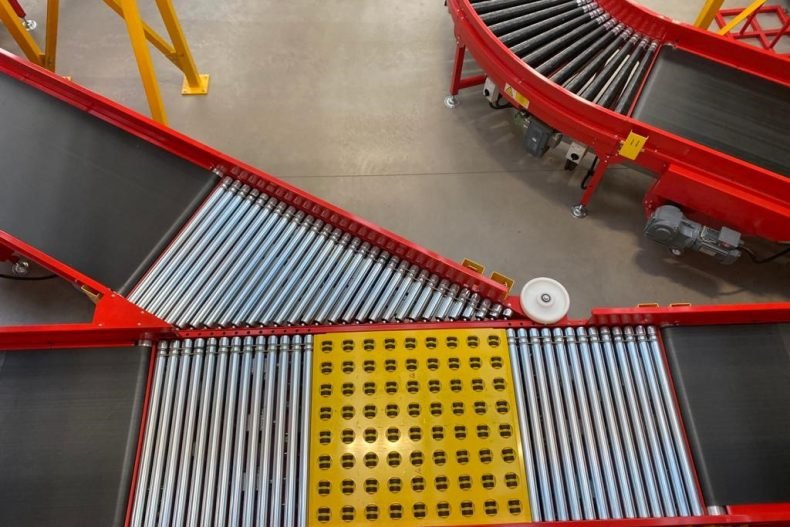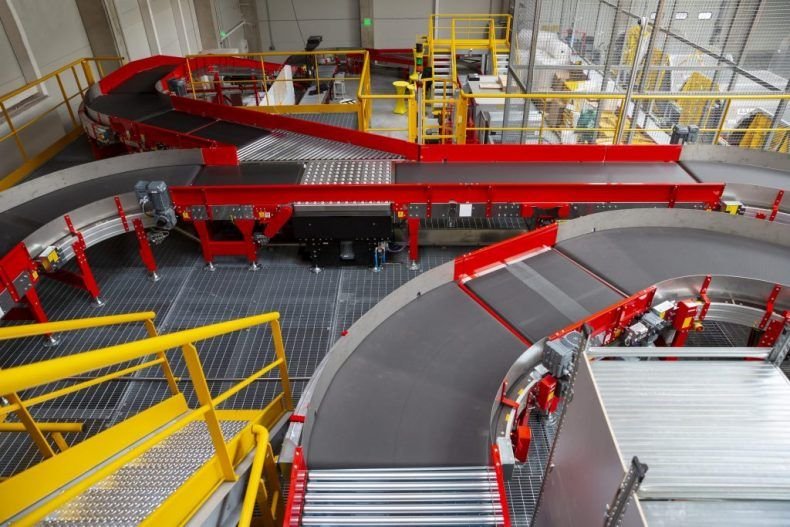It’s important to know there is a different range of conveyor systems, each having their own unique capabilities and can be used for different applications in different industries. Below is a list of the different conveyors that are in use today.
- Roller conveyor
- Powered roller conveyor
- Gravity roller conveyor
- Belt conveyor
- Chain conveyor
- Slat conveyor
- Ball transfer conveyor
- Magnetic conveyor
- Chute Conveyor
- Overhead conveyor
- Pneumatic conveyor
- Screw conveyor
- Vertical conveyor
- Vibrating conveyor
- Walking beam conveyor
- Wheel conveyor
With a range of different conveyors, it’s no surprise they can be used in all industries. Each of these different conveyor systems can be altered for their application and modified with custom pieces that can be added dependent on the conveyor’s use.
Before we jump into the different ways a conveyor can be used in businesses, let’s first have a look at a few of the current statistics and future predictions of conveyor used in industries today.
Statistics and future predictions of conveyor belts used in industries today
Conveyor belt market demand is set to rise to £3.9 billion by 2025
Polymer conveyor belt market set to witness a growth rate of around 3.5% by 2025
Conveyor system market is expected to reach a market size of £7.8 billion by 2025
31% of conveyor market growth will come from E-commerce and 3PL
Food and beverage industry will witness the fastest growth rate due to rising demand for packaged foods with an anticipated growth rate of 4.5% between 2019 and 2025
You can find more detailed explanations on these current statistics and future predictions by clicking on any of the links. But hopefully, you can see that the conveyor market is showing any signs of slowing down soon.
And on that note, let’s look at five different ways a conveyor can be used to give an idea for why the market is experiencing the growth it is today.
Conveyor belts can be used on a manufacturing line
A conveyor system has been a common and integral part of a manufacturing line for over 100 years and was a key innovation within Henry Ford’s T Model production line.
The applications of a conveyor system in manufacturing can include being used on a car manufacturing line, a production line for electrical goods, and a food production line for baked food.
The way a conveyor is used in this environment is by moving the product from one point to the next.
So, when a car is being assembled it needs to go through multiple stages to get to the finished product and be able to function for the customer.
This way a conveyor can speed up the time in which a product is finished as it moves the product to the next section in a constant stream.
Conveyors can be used in baggage handling
If you’ve ever wondered how your parcels are handled in a distribution centre, it’s highly likely that their delivery process involved being put on a conveyor system.
The conveyor system can be functioned, so it holds and moves various weighted and sized items through to the correct department in a much quicker time than by manual labour due to a mostly automated process.
If you look inside any major parcel delivery company, you will see the items going through to different sections which could be using different conveyors.
The sorting section from returned parcels could be using powered roller conveyors while the section for putting parcels on the back of the lorries could be using inclined belt conveyors.
Conveyors are also used for transporting goods and people’s belongings through airports. Notice the next time when you go to an airport the number of conveyors at the bag check security section and in the arrivals when passengers bags come through on the baggage carousel.


